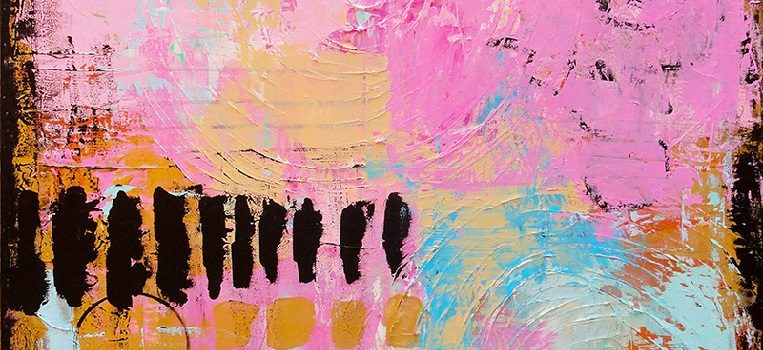Source: Artwork Archive.
Abstract paintings can sometimes be confusing to understand at first glance, but they also have a deep appeal to them if done right. When it comes to actually making a purchase in today’s art markets, determining which pieces are of quality can be hard to do. This article offers most important points to focus on when buying abstract paintings.
Finding pieces of quality might take some effort
Abstract paintings can sometimes be confusing to understand at first glance, but they also have a deep appeal to them if done right. When it comes to actually making a purchase in today’s art markets, determining which pieces are of quality can be hard to do.
With the increase of abstract paintings that are almost identical in size, color and texture, collectors are unsure what they should even be looking for in a new abstract art. In recent years, the term “zombie formalism” has been used to describe abstract paintings with these similarities.
Don’t let this discourage you from getting out there and finding abstract paintings you love. Just keep in mind that finding pieces of quality might take some effort.
Focus on these things when navigating your way through buying abstract paintings.
Recognize the Intention
“There is no abstract art. You must always start with something. Afterward, you can remove all traces of reality.” – Pablo Picasso
You will have to decide what an abstract painting means to you and the feelings it evokes. Spend some time looking at abstract paintings to see if you can find intention or meaning in the piece. What is the painting trying to comment on? Are there any new techniques being deployed?
An intentional work of abstract art will have something to say. It will have a point of view. And most importantly, this point of view will resonate with you on a profound level. The onslaught of zombie formalism has taken away meaning in exchange for churning out pleasing decorative pieces using widely accepted and borrowed techniques from their predecessors.
Quite frankly, it’s hard to tell sometimes what is a look-a-like and what will be considered an important work of art down the road. The more you look at abstract art and familiarize yourself with both the past and current artists in the space, the more you will be able to recognize intention.
Find Conscious Composition
Abstract painters will use some sort of axis to bring symmetry to the composition of their work. Even though it may not always be immediately apparent to you, the balance created by an axis will set a quality abstract painting apart from an amateur one.
Quality abstract paintings are not randomly composed. They are made by using things in real life and representing them in abstract ways.
Alfred H. Barr, Jr, the first director of The Museum of Modern Art in New York City, said it best, “The observer must learn to look at the picture as a graphic representation of a mood and not as a representation of objects.”
Notice Meaningful Use of Color
“Colour is a power which directly influences the soul.” –Wassily Kandinsky
Pay attention to the use of colors in abstract paintings, they are an important reflection of quality. The more time you spend looking at abstract paintings, the more you will start to see how abstract painters use colors with intention. After looking at different types of abstract paintings, you might start to notice colors that are haphazardly placed on a canvas versus ones that work into the piece.
Colors can be very symbolic and arouse different emotions. A quality abstract painting will use colors meaningfully to portray a feeling.
Spot Deliberate Textures
Abstract painters frequently use layers of paint to create texture and shadows in their work.
Splashes, drips, and grit are some textures you will be able to visibly notice when an abstract painter uses texture purposefully. An abstract painting of low quality will most likely not have textures applied, appear to be unbalanced or unstructured, or employ a variety of superficial techniques.
Understand History and Significance
One of the final and most important aspects of determining the quality of abstract paintings is the history of the piece. The painter and their reputation as an abstract painter will be the easiest way to determine if the piece is of quality or not.
Dates are important as well. Knowing if a piece was created early in an artist’s career or during a pivotal time in their career will help you know if the price seems reasonable.
Find professionals who can also share their skills and knowledge of historical materials and techniques, such as art consultants, conservators, curators, or other collectors. To understand the roles these professionals have in art collections, download our Essential Guide to Collecting Art for an in-depth look at buying art.
The best way to learn about quality abstract paintings will be to get familiar with them. Get out and look at some works in person. Seeing abstract works in person is completely different than a printed or digital version. You will get a better sense of the composition, color, size, and texture and start to see for yourself what is of good quality.
by Artwork








